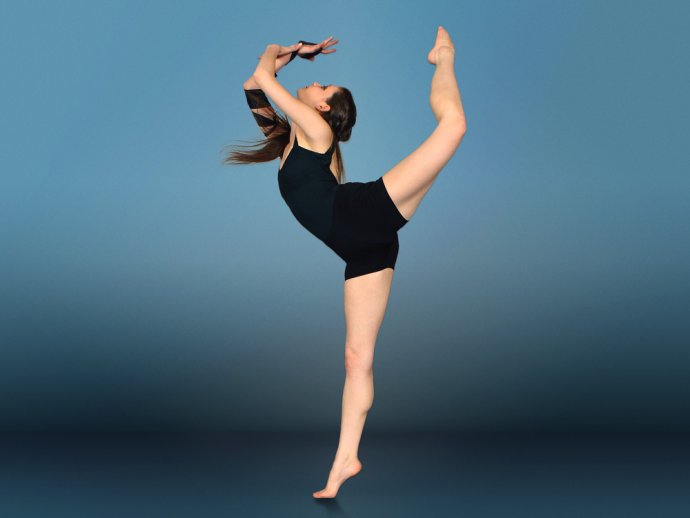Dance Movement Therapy
Gallery

Dance/Movement Therapy (DMT), also referred to as Movement Therapy, is the use of movement to consummate the integration of emotional, cognitive, physical, and social achievement in individuals. Dance/Movement Therapy is based on the idea that motion and emotion are interconnected. The body and mind are interconnected, directly impacting each other every single moment of your life. Through movement, an individual’s personality is expressed through motion and emotion, enforcing communication on a non-verbal expressional level within oneself that is therapeutic for the mind and body.
Movement is symbolic and can represent unconscious feelings, thoughts, and experiences in an individual. In order to take dance to a therapeutic level, improvisation and experimentation of movement has to be examined thoroughly. Improvisational/experimental movement can bring about news ways of relating to your own mind and body.
Dance therapy is rooted within in modern dance movement. Instead of modern dance being used for entertainment, it goes beyond the surface and is used as a form of communication between the mind and the body. The manipulation of dance elements are thoroughly examined through observation. Observing movement leads to the interpretation of it allowing the therapist to construct a meaning to understand the movement itself. Movement has substance and is a language that speaks for itself. It is not used just for entertainment or exercise purposes.
Dance therapists are highly trained to evaluate and assess body language, non-verbal behaviors, and emotional expressions. Treatment is tailored to address the needs of individuals and/or groups. Several techniques are used such as “mirroring” and “movement metaphor” both of which are used to help individuals demonstrate the therapeutic use of dance through matching/echoing movement to illustrate empathy as well as physically demonstrating a therapeutic challenge. By providing a safe space for people to express themselves, dance therapists ensure their clients the right to confidentiality at all time.
Movement Therapy takes a psychodynamic approach to dance by examining the psychological interpretation of mental processes and emotion; how they relate to one another as well as how they directly impact one another. Psychodynamic therapy is based on the idea that behavior is based on unconscious thought. Once painful feelings are faced head on, defense mechanisms decrease and eventually resolve themselves. By addressing the foundation of the problems people suffer from, it will lessen symptoms and improve their mental and physical health thus improving their lives. Therapists assists their clients in evaluating present day problems that stem from early-life experiences, beliefs and emotions. This is done by assessing the unconscious mind. In order to keep painful memories and experiences in the unconscious, people suppress their thoughts and feelings building defense mechanisms such as denial and rationalization to help them cope with their day-to-day life. This evaluation helps therapists and clients examine patterns that have developed over years due to the constant use of defense mechanisms in an individual’s life. Recognizing the patterns they have developed helps them find alternative methods of coping with their illnesses to avoid future distress.
Movement therapy provides a safe environment that encourages and allows clients to be at their most vulnerable state – free of judgement. Being in a safe and creative space allows clients the opportunity to access their unconscious mind thus raising their conscious awareness by freely expressing their emotions, fears, and desires. Accessing the unconscious mind and letting go all defense mechanisms helps individuals reduce stress, prevent disease, and manage mood swings. It promotes self-awareness of the mind and body and also promotes self-esteem. Becoming self-aware encourages individuals to become aware of their mental state and physical state simultaneously, actually connecting and interconnecting the mind and body in action.
There are tremendous physical affects that dance therapy promotes for healthy living in individuals. It helps individuals cope with chronic pain, cancer, obesity, hypertension and cardiovascular disease. It increases muscular strength, coordination and mobility, and decreases muscular tension. Not only are there physical benefits but mental and cognitive benefits as well such as anxiety, depression, and posttraumatic stress, dementia, and communication issues. The social benefits can help those who are autistic, those who have suffered from domestic violence trauma and aggression/violence, and family conflict.
Dance/Movement Therapy can be done by people of all ages and backgrounds and can be used for short term or long term therapy in individuals, couples, families, and groups. It is often associated with improvisational psychodynamic music therapy. There is no musical background required, instead it is used as a method of therapy to interconnect the expression of emotion and music. This creative form of therapy is done by the exploration of various instruments such as guitars, pianos, drums, symbols, etc. Music therapists are highly trained to examine the many different ways clients create music. They are trained to identify and recognize personality traits and emotional issues individual’s experience. The therapist helps the client strengthen their music making by accessing deeper tools of communication for therapeutic use. The use of music provides a release for individuals, dissipating heightened states of anxiety.
Dance/Movement Therapy and Music Therapy are various forms of expression that can be explored by everyone at any given time in their life. By getting in touch with the mind, body, and spirit, individuals are allowed the chance to release tension, physically, mentally and emotionally as well learn something new about themselves to promote a healthy lifestyle within themselves as well as others.
